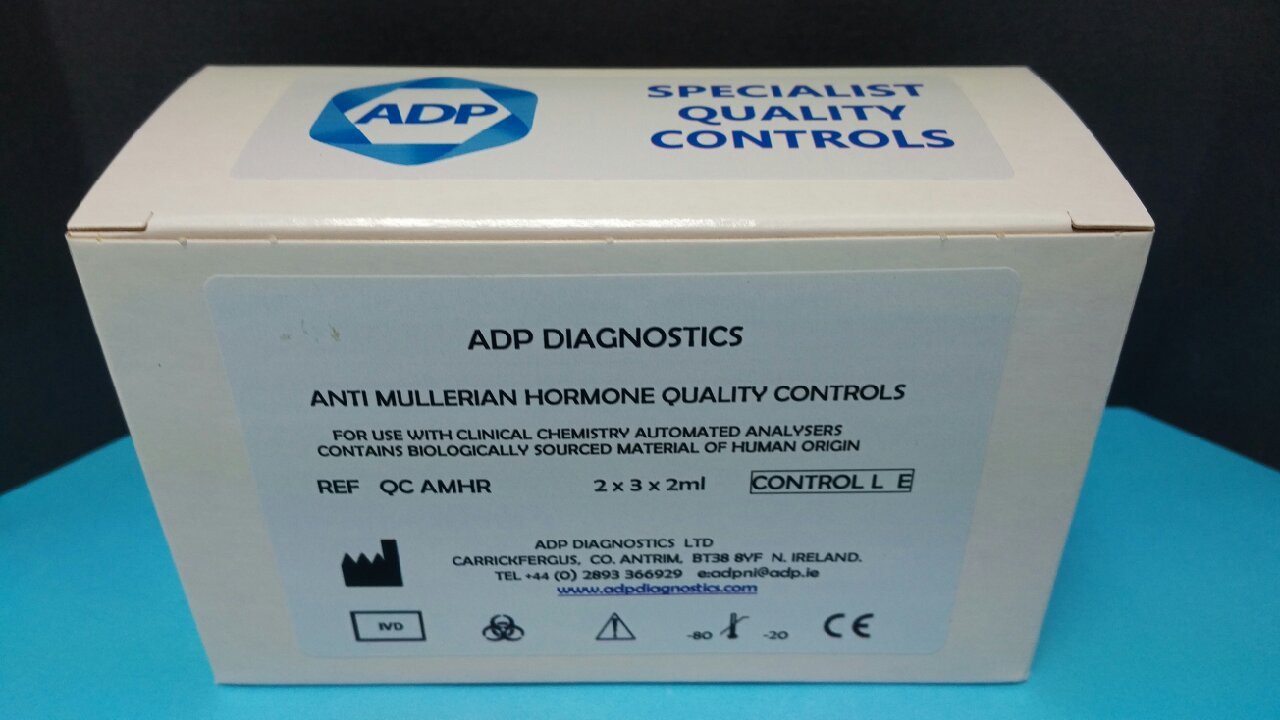

19 February 2021
An important indicator of ovarian reserve is a blood test called Anti Mullerian Hormone. It is a very sensitive marker of ovarian reserve used by fertility clinics, with the analysis performed in the Clinical Laboratory.
The ADP Tri-Level anti-Mullerian Hormone (MIS) Quality Control set is designed to monitor the performance of AMH immunoassays. This quality control has been validated against the Roche (ECLIA) immunoassay on the Roche Cobas analysers. This is a new product that enables clinicians to have a 3rd party QC for their laboratories.
The quality control has been developed in conjunction with the Royal Victoria Hospital in Belfast, Northern Ireland. The levels have been chosen to reflect critical clinical cut-off values around 12 pmol/L, a mid assay and an elevated level of 47 pmol/L, to check the linearity of the assay.
Stored frozen, defrosted it is stable for 7 days. The kit contains 2 bottles of each level, 3 levels, and 2 mls per vial ( 2 x 3 x 2ml).
Contact ADP Diagnostics for further information or for more information on our range of niche quality controls click here.
Further references:
References: Clinical Biochemistry Volume 49, Issue 3, February 2016, Pages 260–267
(The 2013 National Institute for Health and Care Excellence (NICE) clinical guideline for fertility and the European Society of HumanReproduction and Embryology (ESHRE) recommend AMH measurement as one method to predict ovarian response to gonadotropin stimulation [12] and [13]. The NICE guideline states that AMH concentration of ≤ 0.75 ng/ml (≤ 5.4 pmol/L) indicates a low ovarian response to stimulation, whereas AMH concentration ≥3.50 ng/ml (≥ 25.0 pmol/L) indicates a high response [12]. It follows that precise and accurate AMH measurement in these intervals is a prerequisite for reliable interpretation of AMH results in a clinical setting)
